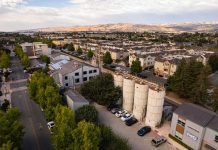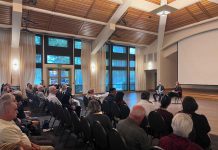This Labor Day is different. The old truths about a dynamic
labor market in which the young and unemployed could quickly find
jobs have given way to a grim new reality
– weak job growth and high levels of prolonged unemployment.
By Evelyn Ganzglass
This Labor Day is different. The old truths about a dynamic labor market in which the young and unemployed could quickly find jobs have given way to a grim new reality – weak job growth and high levels of prolonged unemployment.
This shift threatens to transform far too many of America’s once productive workers into permanently unemployed or unemployable people. Nearly one-third of the nation’s 14 million unemployed workers have been jobless for a year or more, and an additional 8.4 million are working part-time because their hours have been reduced or they simply can’t find full-time jobs. Equally troublesome is that only 58 percent of those over age 16 are working, the lowest percent since 1983. The employment situation is worse for young people, older workers, black and Hispanic workers and those with no more than a high school education.
The unemployment rate has hovered around 9 percent or more since April 2009, and the shock value has worn. But if we allow idle workers and persistently high unemployment to become the new normal, we risk the deterioration of communities as well as the nation’s position as a global economic force. Research shows persistently high unemployment has negative long-term social and economic consequences for individuals and families. The longer people are unemployed, the less employable they become because their skills decline and they lose connections to networks that may help them find jobs.
College graduates who enter the workforce during a recession have lower lifetime earnings than those who began working when jobs were plentiful. Their entire careers and financial livelihoods are negatively affected by their early labor market experience. Older unemployed workers often leave the labor market altogether, which reduces their retirement incomes.
Joblessness adversely affects children, too. For example, research shows parents’ diminished economic resources negatively affect their children’s education attainment. Heightened family economic insecurity is also associated with increases in child neglect and family violence.
These negative outcomes for individuals and families are reason enough to invest resources in jobs creation. However, the harmful consequences extend farther. The Department of Labor notes that we celebrate Labor Day because the, “vital workforce added materially to the highest standard of living and the greatest production the world has ever known and has brought us closer to the realization of our traditional ideals of economic and political democracy.”
In other words, American workers make this country prosperous. Our more than two-year-old economic recovery is fragile in part because far too many Americans lack jobs. But it doesn’t have to remain this way. There are actions the nation can take to address high unemployment in the short- and long-term. But it requires that federal lawmakers do more than simply acknowledge we have a jobs crisis. They must also begin addressing this problem with the same level of urgency that they devoted to the debt ceiling. Two strategies they could implement are work sharing and subsidized jobs.
Work sharing is a federal-state unemployment insurance program that allows companies faced with reduced demand to cut all employees’ hours instead of laying off some workers. Company workers, in turn, maintain their jobs and benefits and also receive partial unemployment compensation to help offset lost income. Twenty-two states have work sharing programs. During 2009 and 2010, companies’ use of the program saved 265,000 jobs, according to the Department of Labor.
Another strategy is subsidizing jobs to provide opportunity for youth and long-term unemployed workers, a strategy that has been shown to benefit workers and employers. Last year, the government ended a successful, two-year subsidized jobs program that provided employment for about 250,000 people. The program put people to work while jobs were scarce, and it also helped employers boost productivity. A subsidized jobs program could be funded outright, or it could replace the $1 billion federal Work Opportunity Tax Credit program, which has had little effect on hiring and retaining disadvantaged workers.
For the long-term economic health of the nation, we must maintain investments in education and training to build a strong workforce. This is critical at a time when more jobs require increased skills. Experts project that by 2018, nearly two-thirds of the nation’s jobs will require some postsecondary education, but right now just over half the working population meets this threshold. A recent report of the congressional Joint Economic Committee predicts that, “without strategic investments in worker training, high rates of unemployment and long-term unemployment will persist, resulting in greater outlays for government, a reduction in revenues and slower economic growth.”
Federal lawmakers are in their districts this Labor Day. Some of them will issue public remarks celebrating the nation’s workers. But the remarks will be hollow if they fail to return to Washington and take action to make sure the nation invests resources to put people back to work. High unemployment doesn’t have to be and shouldn’t be the new normal.
Evelyn Ganzglass is the director of workforce development at the Center for Law and Social Policy. Readers may write to her at: CLASP, 1200 18th Street NW, Suite 200, Washington, D.C. 20036; website: www.clasp.org.







